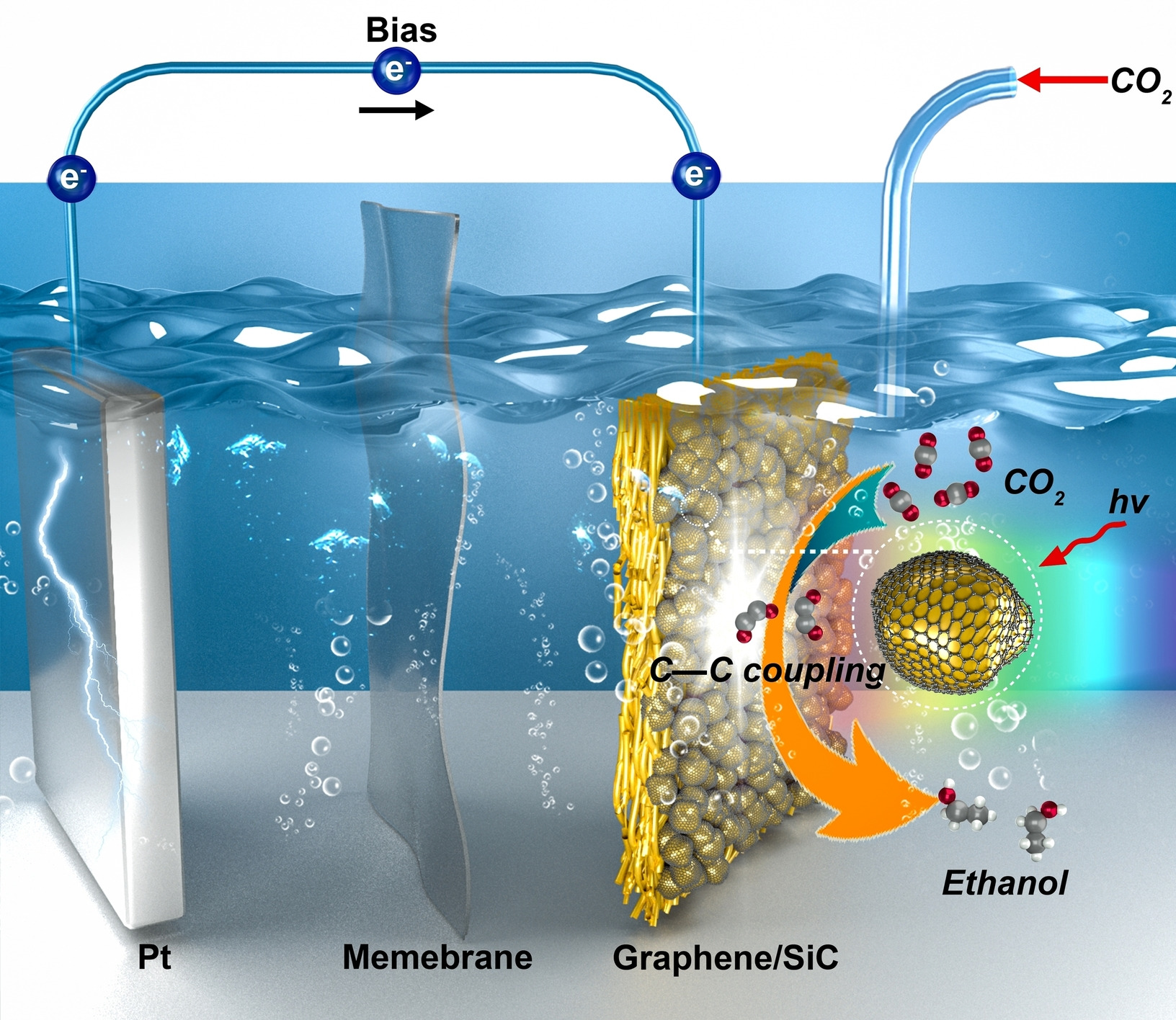Chinese Academy of Sciences
Artificial photosynthesis (AP), using sunlight to produce valuable chemicals and fuels from carbon dioxide (CO2), is a promising strategy to achieve solar energy storage as well as negative carbon cycle.
However, artificial photosynthesis is quite complex and involves multiple sequential and parallel steps. What's more, thermodynamically favorable C1 products can be produced from multiple AP intermediates, making it challenging to selectively produce target chemicals containing C-C bonds.
Recently, a research team led by Profs. CHEN Wei and WEI Wei from the Shanghai Advanced Research Institute (SARI) of the Chinese Academy of Sciences has developed novel graphene/silicon carbide (SiC) catalysts for efficient CO2 photoelectroreduction to ethanol (C2H5OH).
The results were published in Angew. Chem. Int. Ed. on Feb. 14.
The proposed composite catalyst, which comprises SiC substrate, interfacial layer (IL), and few-layer graphene overlayer, can help to achieve the precise control of active intermediates for C-C coupling.
An optimal IL structure allows photogenerated electrons from the SiC substrate to be facilely transferred to the active sites on the graphene overlayer. Reaction intermediates can then be efficiently formed and stabilized owing to their strong adsorption at the active sites and the high electron density of the graphene surface.
The researchers found that CH3OH formation was largely suppressed in favor of C-C coupling. C2H5OH was therefore exclusively generated with a selectivity of >99% and a CO2 conversion rate of 17.1mmol gcat-1h-1 under simulated solar irradiation with a small bias (-50 mV bias vs. Ag/AgCl) and ambient conditions.
Thus, the photoelectrocatalytic performance of the optimal catalyst in producing C2 products from CO2 was at least two orders of magnitude higher than those of the state-of-the-art AP catalysts.

/Public Release. This material from the originating organization/author(s) might be of the point-in-time nature, and edited for clarity, style and length. Mirage.News does not take institutional positions or sides, and all views, positions, and conclusions expressed herein are solely those of the author(s).View in full here.






